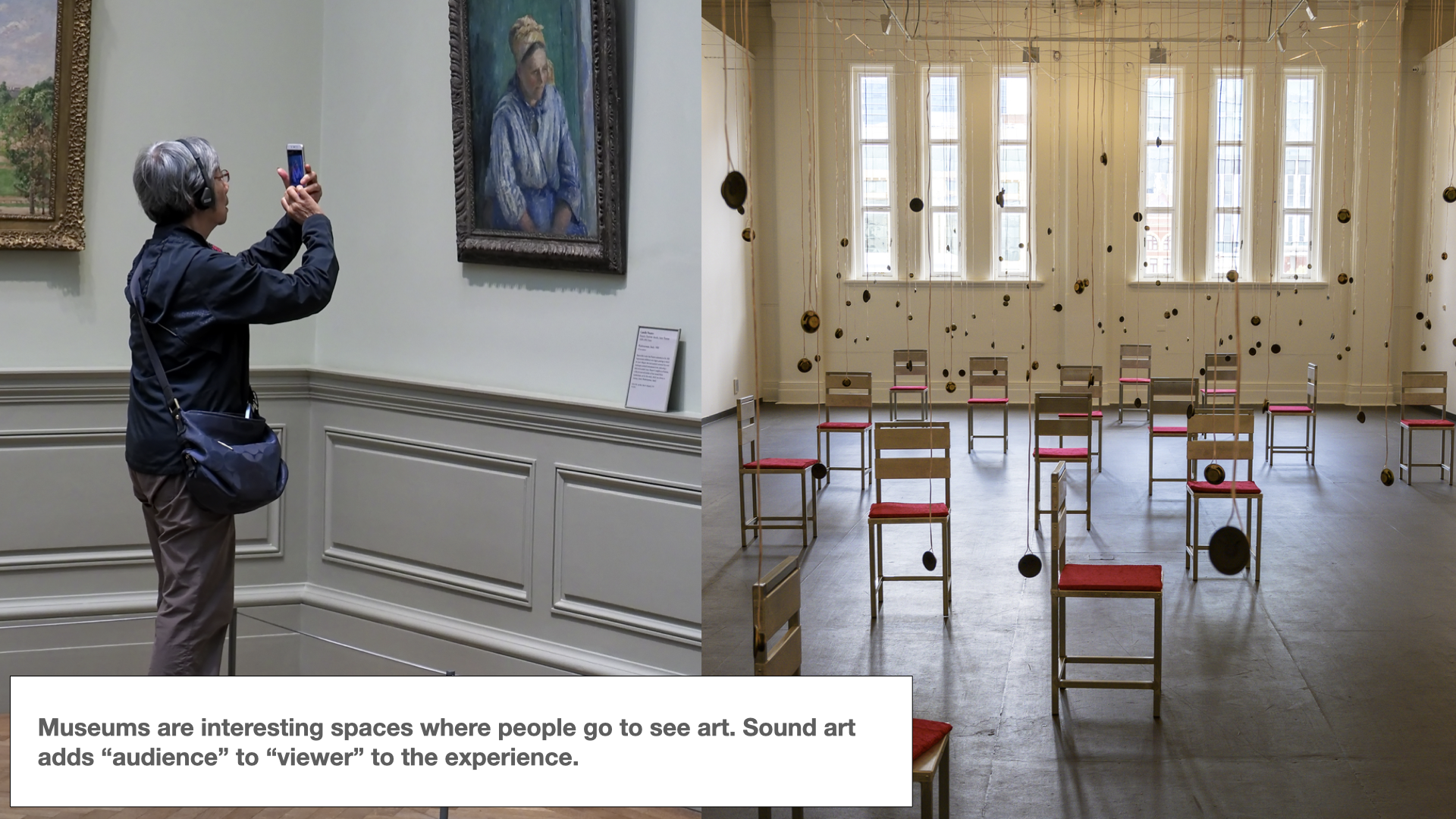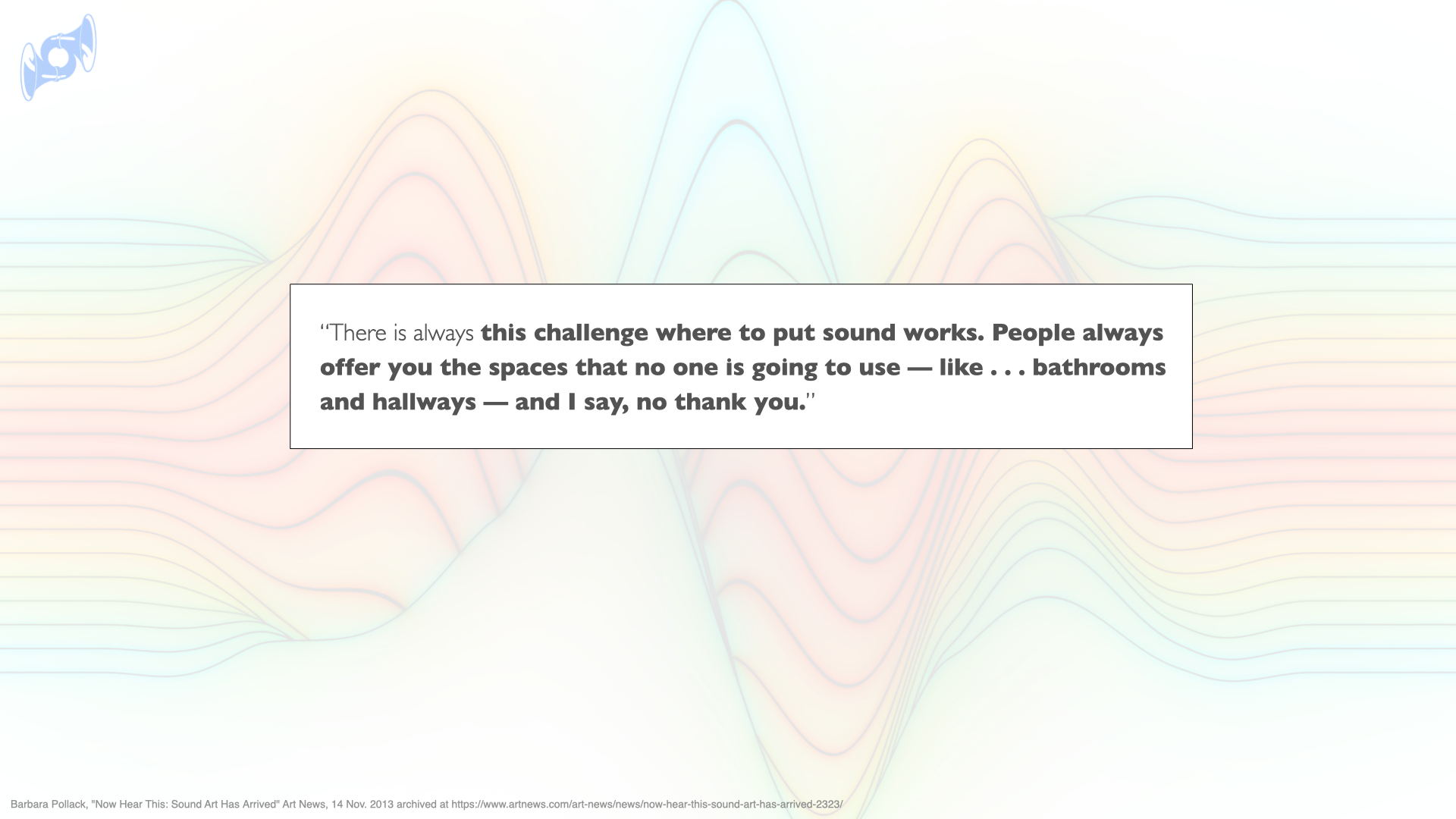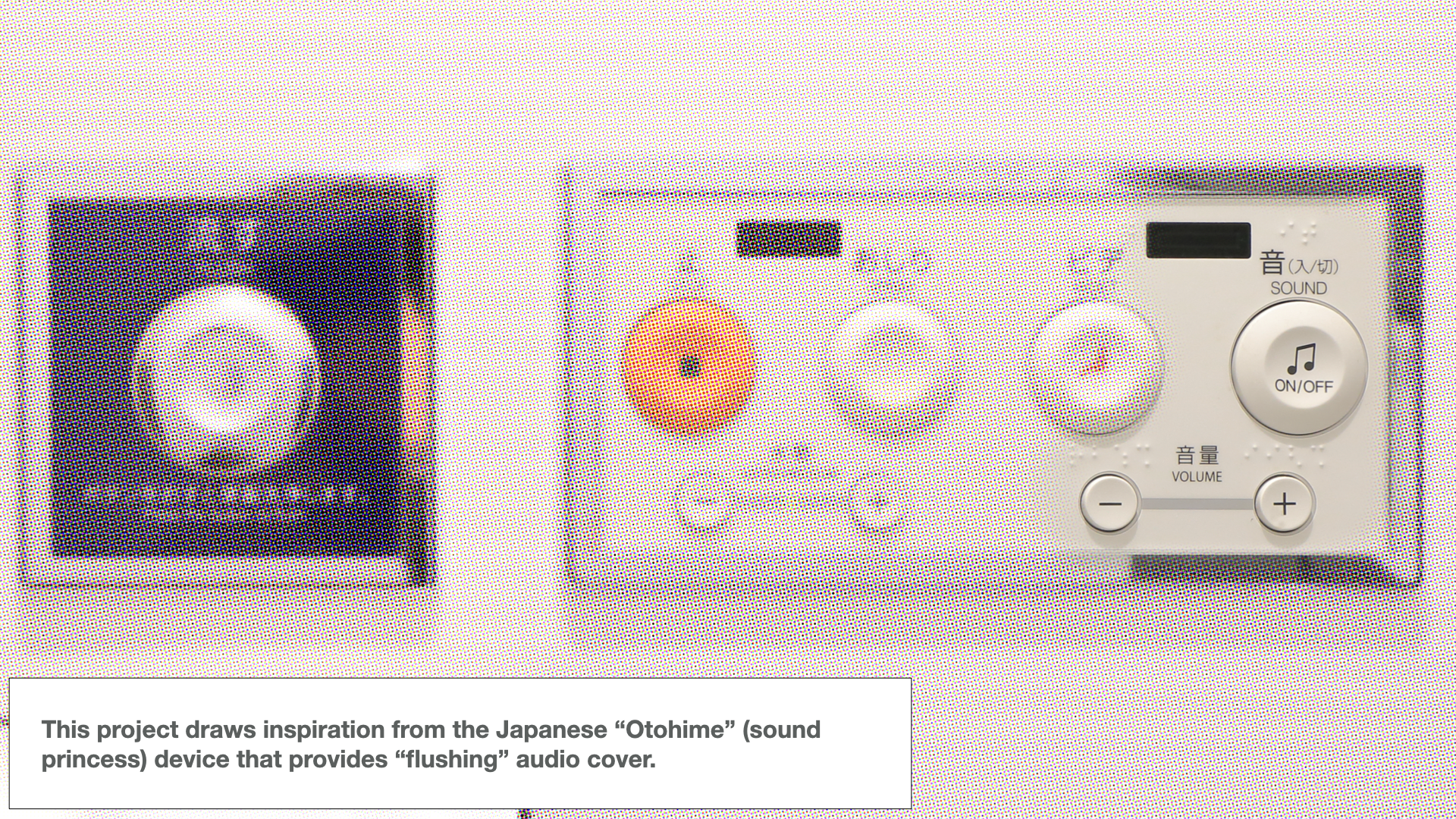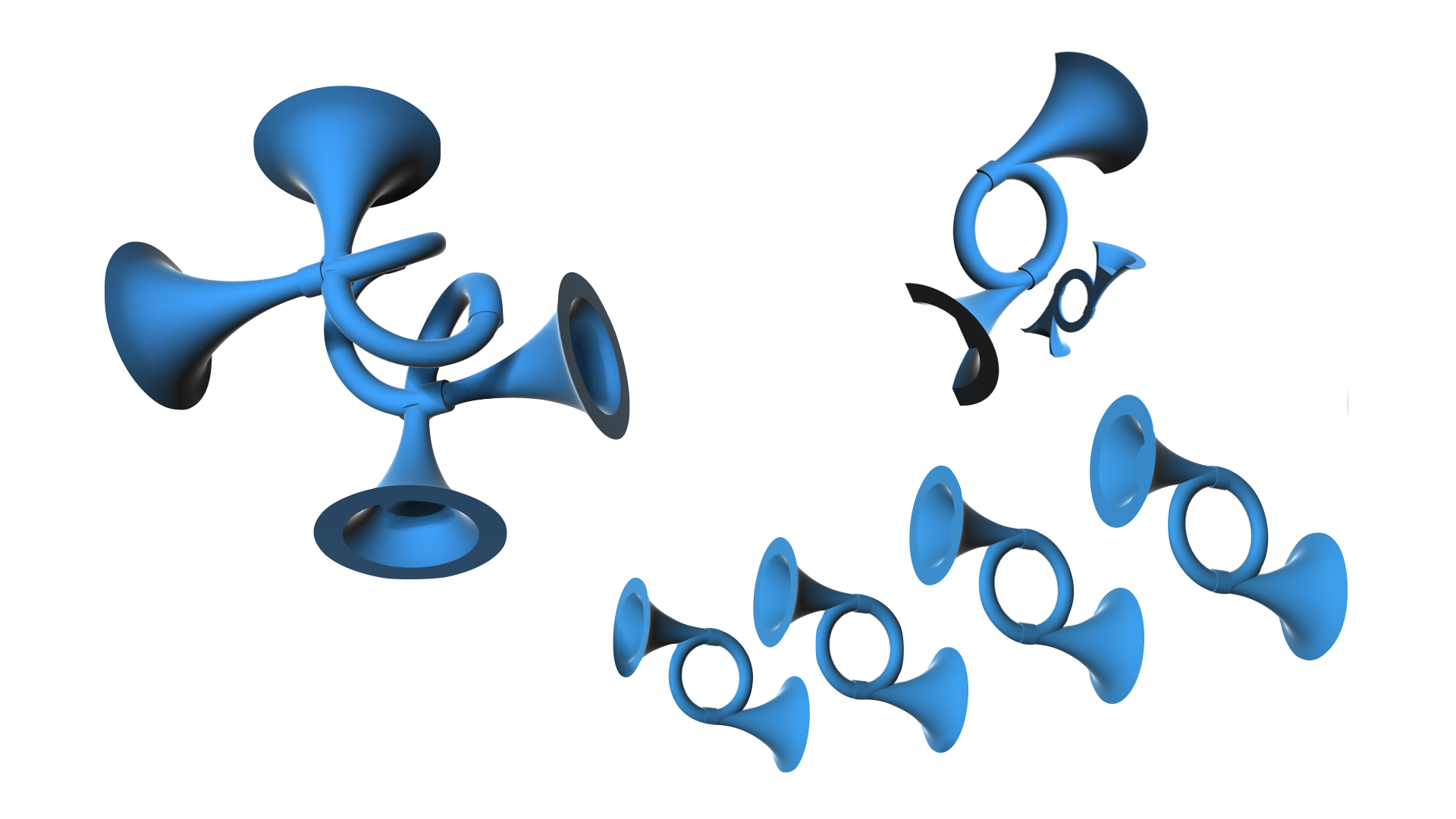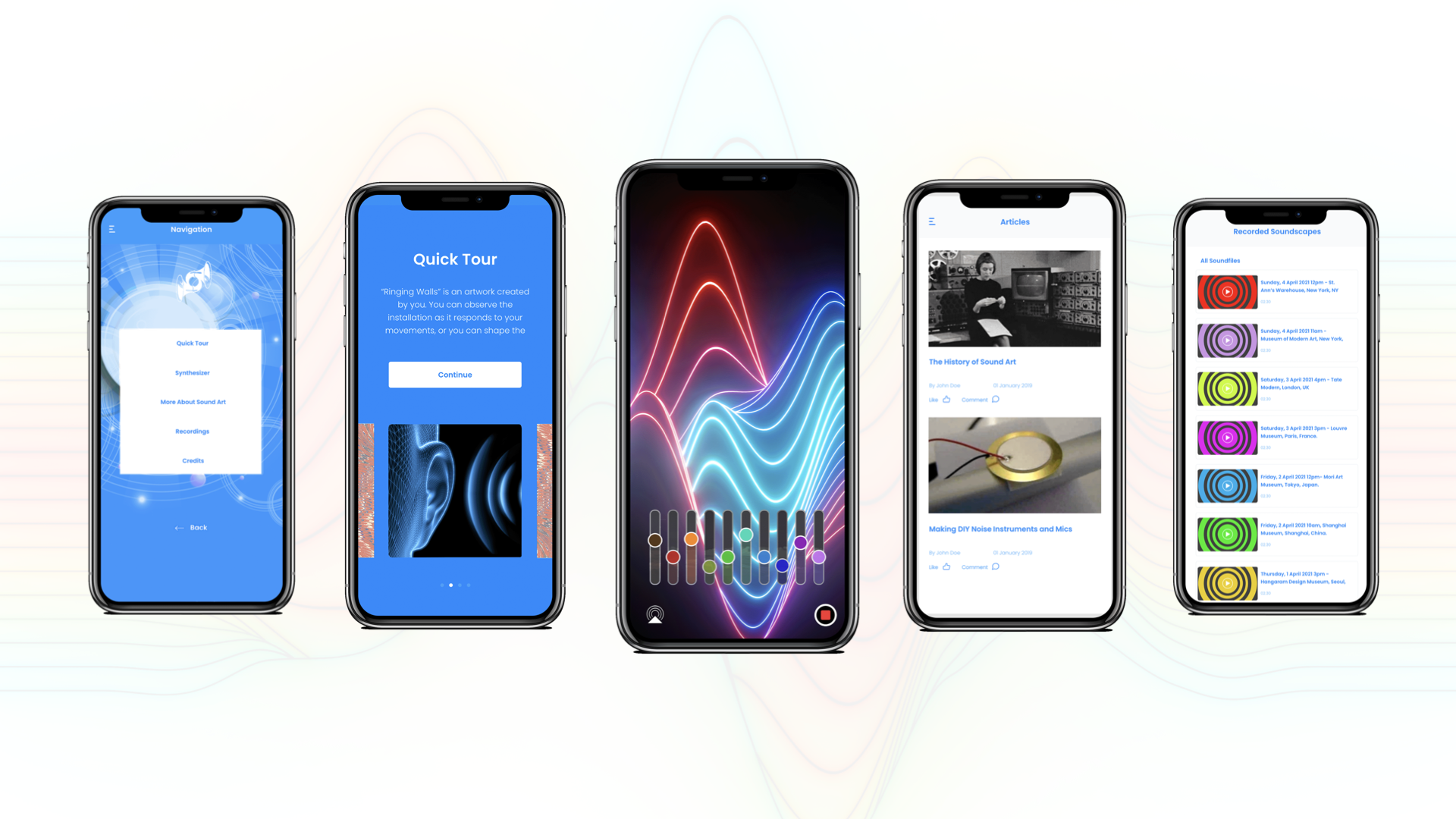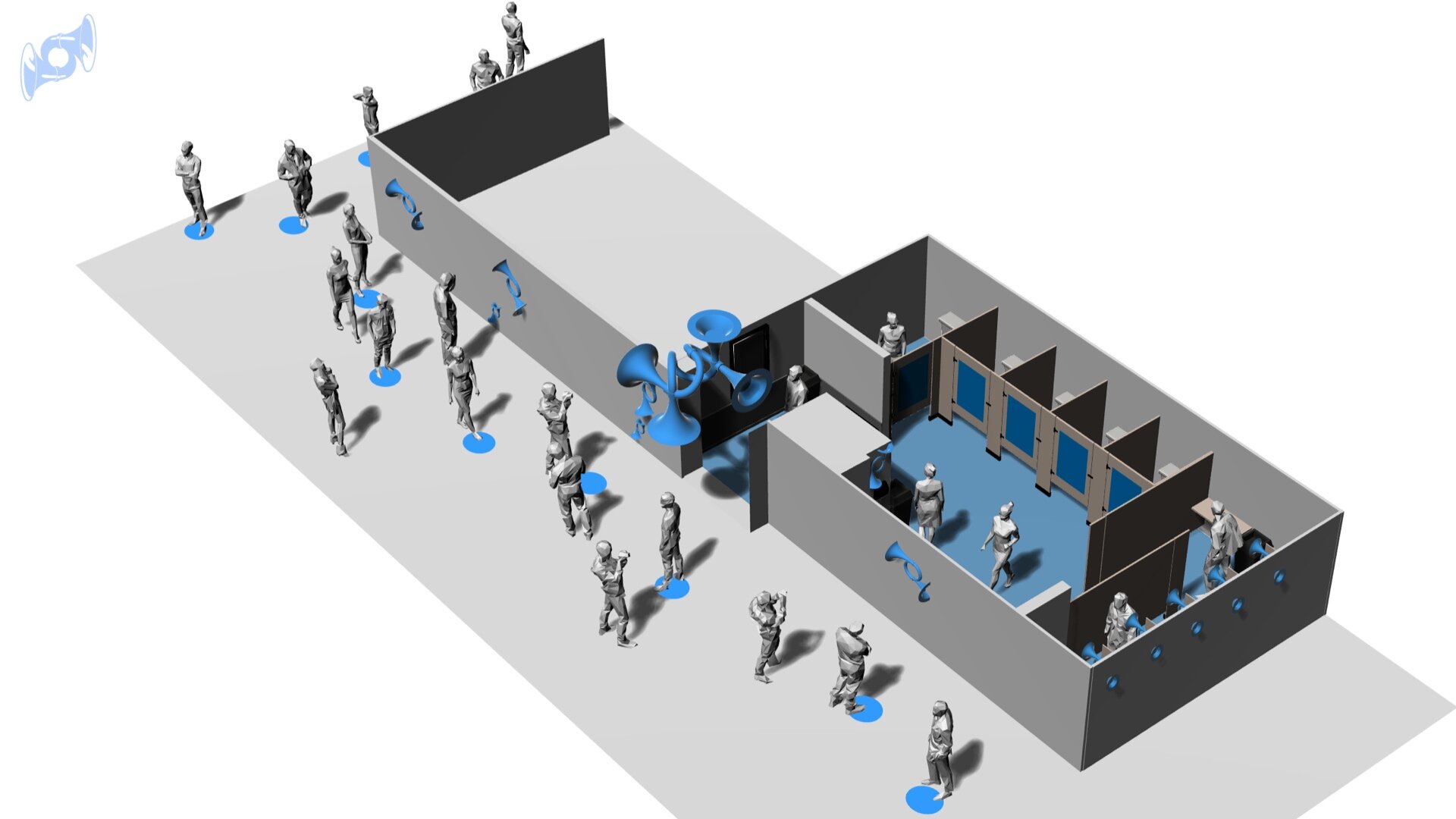“Ringing Walls”
Speculative Sound Installation
For this project, I focussed on deconstructing and reconstructing an art installation - specifically a sound art installation.
I’m interested in sound art as it exists between music and visual arts. I am also interested in ways to reduce anxiety in public spaces. However, using sound art this way isn’t a new idea. Brian Eno worked from this premise for his 1978 album, Music for Airports. Eno’s work was intended as a sound installation in airport terminals. He envisioned his work not only as a counterpoint to “muzak,” but also an environmental sound work to calm anxious travelers. However, when Eno’s work was played in airports it did not work as expected and airport workers found the work melancholy and unsettling. Another source of inspiration was looking at spaces that were decidedly not art — like hallways and public bathrooms — but were sites of social anxiety. Here I landed on this project.
“We can contemplate the possibility of placing sounds in a public space that has nothing to do with art. In this case, the sounds introduced will change the perception of that place.”
— Barbara Pollack
“Ringing Walls” sound installation
“Ringing Walls” is a sound art installation that uses one bathroom in the museum that is performed or rather played as people interact with the installation. This installation is set in the hallway and one bathroom at the museum. In the time spent on the line and then in the bathroom space, people are invited to engage in and create the soundscape through their actions.
There are three layers to the sound experience: mechanical sounds that are mic’d with contact mics and play when foot steps are detected on the hallways floor, faucets are turned on and toilets and urinals are flushed. Sound as we think of it is created by the vibration of air molecules, however the mics used here only pick up the physical vibration of object and do not mic “embarrassing bodily sounds.” The resulting sounds that are recorded are otherworldly and fascinating. A second layer of sound is made up of sound gathered by more contact mics and randomly generated by motion - either by walking by or a hand wave to playful sensors and speakers located on the floor, walls and ceiling. The final layer of sound is from a synthesizer located in the app that people on the line can download.
“Music making” is in the hands and movements of the people on the line and moving through the bathroom. The tools to do this can be as simple as a physical gesture and no more complex than using one’s personal mobile phone to interact with the exhibit. No musical experience is required. The result is free-form, meandering and the sounds are ambient and atmospheric. The work created in interacting with this installation take advantage of the “alone together” feeling of these spaces. It provides a distraction as well.
The level of engagement is not a barrier to participating or experiencing the work. One can literally do nothing and move through the exhibit and be charmed by it or one can freely move and participate making new rhythms - in effect becoming the conductors of the musical experience. The app is an invitation to fully participate in the installation. The centerpiece of the app is the synthesizer — a collection of drones — that one can play and wirelessly share with the exhibit’s speakers. There is an option to record and share the full experience or “soundscape” as well as read more about sound art and listen to other recordings from other museums that mount this installation.
Reflection and Next Steps
Finally, while this is a speculative project, sound has potential as a design medium. While this project may seem provocative, it is a simple extension of the goals of ambient music set forth by Brian Eno in the 1970s. It also explores ways to think about using sound in public places. What could happen if we move past Muzak and put music-making in the hands of people stuck in lines or other anxiety-producing spaces? Could this work? Would the results be soothing and enjoyable or annoying? Setting this exploration in the context of one hallway and bathroom in a museum implies consent — museum goers are looking for enriching experiences and the signage is clear that traditional gendered bathrooms are available nearby.



